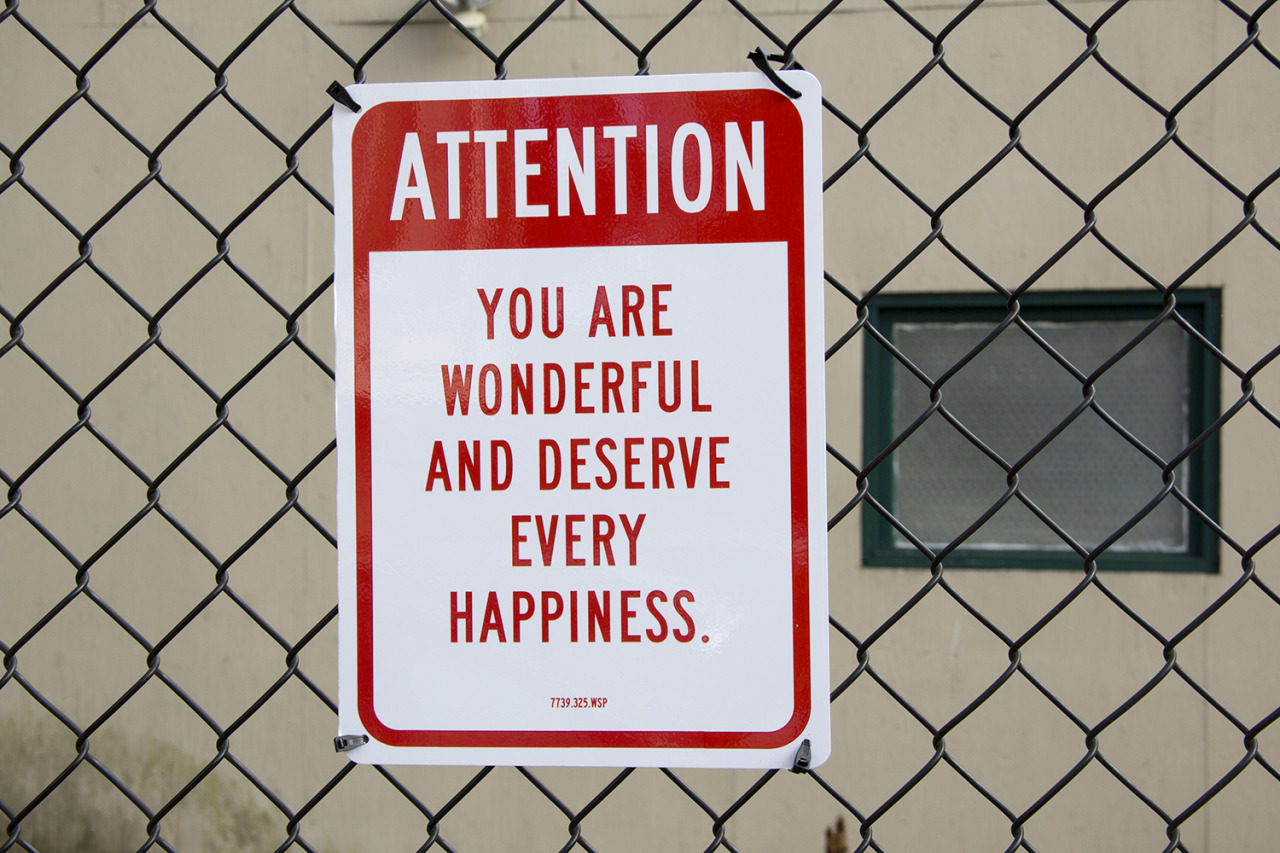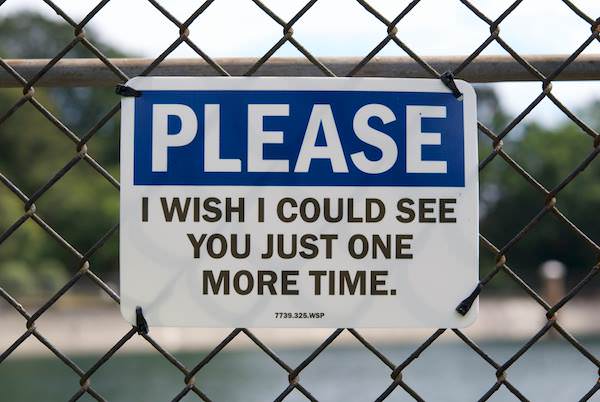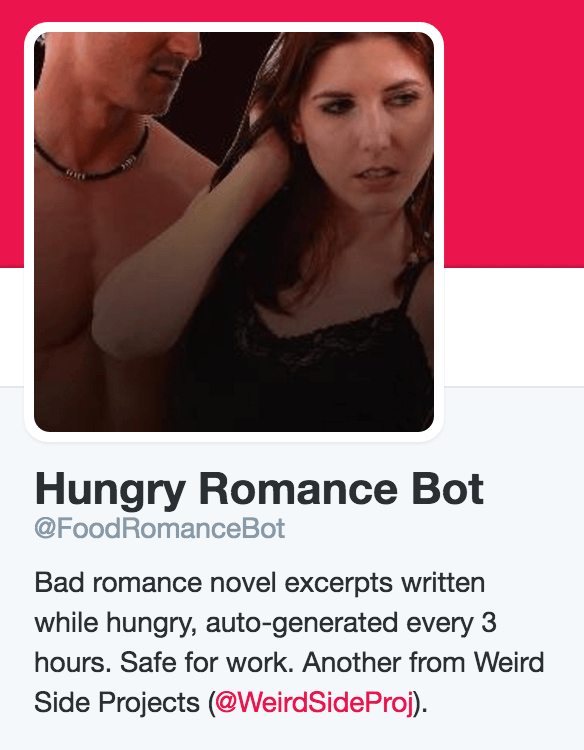
How Side Projects Fuel Creative Living with April Soetarman
April Soetarman works as an Experience Designer within a studio at the global architecture, planning and design firm NBBJ in Seattle. But, it’s not only her day job that requires her to tap into deep reserves of her creative potential; it’s her prolific experimentation with an artistic (and somewhat vandalistic) endeavor called Weird Side Projects.
As an artist and designer, April has altered the user experience of the fortune cookie, caused unsuspecting pedestrians to look twice at street signage, and coded a bot to tweet out food-inspired romance.
In our interview, we consider the difference between art and design, talk about making time for side projects, and learn what April does when she hits a wall in her work and creativity. Also, we give you a look at some of her…eclectic (!) side projects.
Describe the moment you realized you were a designer.
AS: That’s hard because, technically, I went to school for it. But I very clearly remember a moment my junior year, when I was talking with a professor [Lisa Iwamoto] who is a fairly big name in California, and she told me, “You’re a really good designer.” I’d been feeling pretty bad about my work, you know, architecture is hard, it’s called “archi-torture” for a reason in undergrad. She told me, “I don’t know what you’re going to do after graduation, but you’re a really good designer.” And that was really encouraging. At 21 years old, that was the first time when someone who is recognized as a designer also called me a designer.
Describe the moment you realized you were a artist:
AS: That one’s interesting because, growing up, I always did a lot of art, and my mom’s an artist. People would say, “Oh, you’re so artistic, like your mom!” I would draw a lot and, of course, play music and piano. But I didn’t really start self-identifying as an artist until a year or two ago. I did sketches, but that would fall into the realm of architecture. I wouldn’t introduce myself as an artist. I was told, “You’re too smart to be an artist.” People will often think of “artist” as “lesser.” Design is like creative problem-solving versus art falls into a different bucket. They overlap, but they’re not the same thing, even though design can be artistic. Design is making order of chaos, whereas art is making meaning out of chaos. Now, I would say that I’m a designer and an artist.
What were your creative origins like? What did your “just getting started” look like?
AS: My mom’s an artist with an MBA and my dad’s a former medical doctor turned computer science PhD. Our house is filled with art. I remember my mom making my dad a painting for his birthday and, as I was little, I would help out. If we made something it would be framed in the house. Art was encouraged, and it was a part of growing up. Same with my dad, although he’d say, “Hey, this computer needs more RAM,” so we’d take it apart, go to the store, and he’d show me what to buy, then we’d take apart the computer together and add more hardware. When I was five, I wanted be an architect because I liked playing with LEGOS, but when I was 10 I wanted to be CEO of a computer firm because I liked computers and, apparently, they say, I liked giving orders. When I was 16, my diary says I wanted to be a starving artist, but I meant it ironically – I’d live in a well-designed cardboard box and write poetry in cafes with my beret; I think I was very tired of academics at the time. I think I’ve made each one of those selves happy in some way.
And after you left home, what was your vocational path like?
AS: After graduation, I was really burned out by architecture school. I knew I wanted to be a designer, but I didn’t know if I wanted to be in architecture. I got a first job out of college and interned as a design engineer at a company in California that did a lot of fitness and active sports equipment. While it was really fun, I was the only “designer” designer there, mostly I was working with mechanical engineers. While I really enjoyed it — I learned “SolidWorks,” made prototypes out of inflatables, did UI/UX flows – I knew that if I wanted to become a better designer, I would have to work with designers that were better than me.
Wanting to become better at anything will always be easier said than done, so what steps did you take to become a better designer?
AS: In 2013, I made a personal goal to try something new, different, or scary. I bought a bike and biked to work every day for one month. I tried skydiving. I tried to make sure that post-college, even without the structure of school, I kept challenging myself in ways that would be good for my personal growth. I was also watching a ton of TED talks, checking job listings, and journaling and sketching a ton. I had a lot of ideas. Then, I found Experience Institute on a Good.is article and applied. I was invited to join the founding class. I chose Experience Institute after talking with folks [coworkers], who told me, “Hey, you’re 23, we’ll still be here when you get back.” Then Victor Saad [founder of Experience Institute] said, “It’s not going to be easy, but it’ll be worthwhile.” So I bought a one-way ticket to Chicago and designed my own education based on projects and apprenticeships.
What did designing your own education consist of?
AS: My first term was as a project manager at a web design and development company called Doejo. My second term was at nbbj in Seattle, the architecture firm that I am currently working for. My third term was split between Leo Burnett, an advertising agency in Chicago, doing creative strategy for a non-profit campaign and also Latent Design, a small architecture firm, on a storytelling campaign. Being in a variety of situations like that was helpful in feeling validated that I was a good designer. Being put in situations where, even though I didn’t have years of training or a background in, I was still able to make things work and improve situations, whether it was a concrete thing or strategizing.
April recaps the year she spent self-designing her own education in this video:
You are a designer for world-renowned architecture firm nbbj. I imagine they are keeping you fairly busy at work, yet how do you manage to find the time and energy to launch something like Weird Side Projects?
AS: I’ll get ideas when I’m working on a project and it’ll be a great idea, but it won’t be great for the client that we’re working with, but it’ll spark something. I started using Trello board last year and it’s super useful. I have it sorted into physical and digital art. Also, I have a “not now” column where it’s stuff that may be a great idea, but maybe later. Saying no to stuff is really important. Last year, a friend and I had scheduled work time every Wednesday, which I used to work on projects. Much of my momentum for Weird Side Projects is because I’ve regularly worked on it every week.
In your experience, what has been a successful way to start a new creative endeavor?
AS: With a lot of the text art, I’d see a phrase, then I would think of where it would be placed. Like, “Notice: I have never stopped loving you. I hope you are well,” I liked the idea of it being discovered, looking official. Then with, “Sorry for being shitty,” I was trying to think of ways that you could apologize to someone, but without it being a huge deal. It’s usually starting with the idea, but then asking, “Where would be the most useful place to put it?”
What do you do when you hit a wall?
AS: Well, if one project hits a wall, then another project will take its place. Certain projects will hit a wall, but something else will have momentum. For example, Food Romance Bot, that was a really quick turn-around. I remember sitting one afternoon and researching a lot about bots and then thinking, “Oh, I think I can build this.” It turns out that it wasn’t that hard to build, technically. That one was a pretty fast one from idea to execution. Whereas some of these other ones take a longer time. Also, things like dancing keeps me present; it keeps you in the moment.
How have you been surprised lately?
AS: I didn’t go public with Weird Side Projects until October, at Bend Design Con, and I was surprised by how much people liked them. Honestly. It’s one thing to share with your friends, with people who already get you and your sense of humor, but sharing them publicly and have people really respond, and enjoy them and the sentiment behind them, without having to explain them, that was pretty surprising. And very encouraging as well.
What are some experiences that you think any person should have?
AS: I’m the type that thinks everyone should make art. Just because. Everything that I’ve made that I consider to be art was made in a direct response to another experience. It’s something that everyone can do, but that, as we get older, become really self-conscious about.
How do you prevent yourself from getting creatively stuck?
AS: It helps to collaborate with other people. Jam sessions, or dancing, or just having people over to talk about art. When I talk through a project with artists who are friends, it helps to define it, and helps me think it through in explaining it to someone else.
What’s a project that you’re really excited about right now?
AS: It’s hard to explain things that aren’t done yet. Like Romance Bot, people didn’t get it until I just built it. For me, my weird side projects are all connected, because I work with human experiences and human emotions. When something hits me emotionally then it will stay. The biggest thing I’m working on is a museum thing, but I hesitate to talk about it until it’s built because it will evolve and change as it goes on.
What is the best piece of advice you have been given?
AS: I got to talk to someone who I really admire [Maya Lin], the architect who did the Vietnam Veteran’s Memorial in D.C. when she was 21. I was fan-girling over her, and I asked her what she thought was the best way to connect with someone. She told me something along the lines of: “Emotion and humor are the best way to reach people.”
If you could master one skill you don’t have right now, what would it be?
AS: In terms of hard skills, there’s a particular kind of coding, web development stuff, that I’m trying to get better at. In terms of softs skills: time management. (I have a Trello board now, and that really helps.)
If you could have a billboard anywhere, where would it be and what would it say
AS: You know, I don’t know if I can release this yet because it’s actually going to be a project for me!
What impact are you trying to make through your work?
AS: It’s still exploratory and it’s probably going to keep on evolving, but, because I called it Weird Side Projects, they’re not meant to be super profound, they’re not meant to be life-changing, there’s not a lot of expectations to be put on the title “Weird Side Projects.” They are a weird side project, so that’s been really helpful for me, or else I’ll think too much about what it means to different people in different contexts. Honestly, I make them for myself first, or I make them for myself in relation to somebody else first. So the impact for myself has been to get the project out of my system. Secondary benefit has been that, because I share them, other people have enjoyed them and it has inspired other folks to do their own side projects.
April shares with Ignite Seattle, the largest open submission public speaking event in the Pacific Northwest, about why she’s so into making weird side projects.
When you think of success, who immediately comes to mind? Why?
AS: Well again, I really liked Maya Lin. I admire and respect her art and design work of course, but she also seemed like a really grounded and down-to-earth person, despite being very famous and internationally recognized. She was wearing a cardigan and jeans, and after the talk I overheard her talking about going whale-watching with her daughter the next day. It seemed like she found both professional and personal success in a way that I admire.
…
You can learn more about April at her personal website and view her side projects at WeirdSideProjects.com
Note: April’s answers were edited from an audio interview for concision and clarity.



























